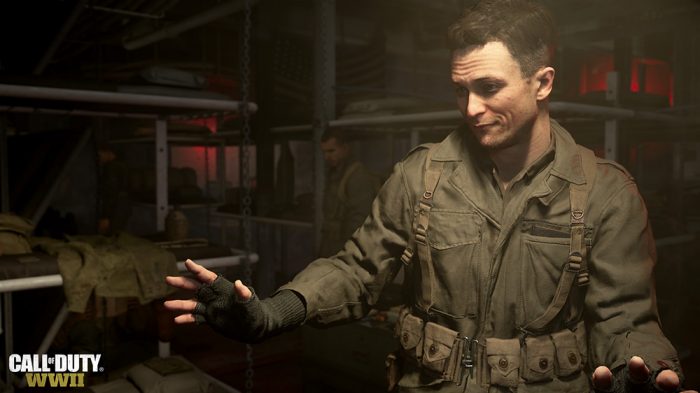
There’s a soft spot in my heart for Call of Duty. Call of Duty II was the first game I picked up for the Xbox 360, heralding the new HD era of video games with a stunning World War II era first person shooter full of drama and action. My mind was blown at the time; games couldn’t possibly look that good and play that well, but CoD proved that they could.
I was sold on the series then, and a part of my gaming history is still attached to it now. With the FPS genre having evolved leaps and bounds over the past 12 years, Call of Duty has tried to keep up by throwing in some action-based tweaks as opposed to sweeping changes, hoping to prevent from angering its fanbase.
But while the games have been technically solid, delivering on the Call of Duty promise, the minute changes haven’t necessarily been enough to maintain pace. With the sci-fi genre blowing past them, and games-as-a-service becoming the du jour way to proceed in the landscape, Activision’s mega game was being left behind.
With Call of Duty: WWII, Activision realizes that to differentiate their franchise they need to start fresh, they need to reboot, and they need to go back to World War II.
Thankfully it works… mostly.
Up until recently, Call of Duty has become more far-fetched along with the more futuristic take. It’s more difficult to connect to the unknown future than the known past; we know history, we’re taught history, so we can understand history… but we don’t know the future yet and can’t make that connection as well. It’s why the series’s single player experience has stopped resonating with players, forcing them to pick up the game for just the multiplayer modes.
Because it’s set in the known past, CoD: WWII feels different. It feels real, it feels grounded. Gone are the wall jumps and laser cannons and jet packs and drones. Perhaps the craziest thing in the game is actually the speed at which we mount heavy artillery. It’s this believability makes it easier to connect to the game. It’s back to basics. But the paring down also removes some of the fudge space that the series could work around, leaving behind the crazy gameplay mechanisms and refocusing the mastery of shooting.
This is a concentrated CoD game by mechanism, so players who come to the series for more of a unique experience are going to feel a little let down here, but with its various modes it opens up accessibility in other ways. Coincidentally, the return to the primary elements of CoD let all the modes work together better thematically, so moving from one to another isn’t as jarring as it is in the past. It doesn’t feel like three different games.
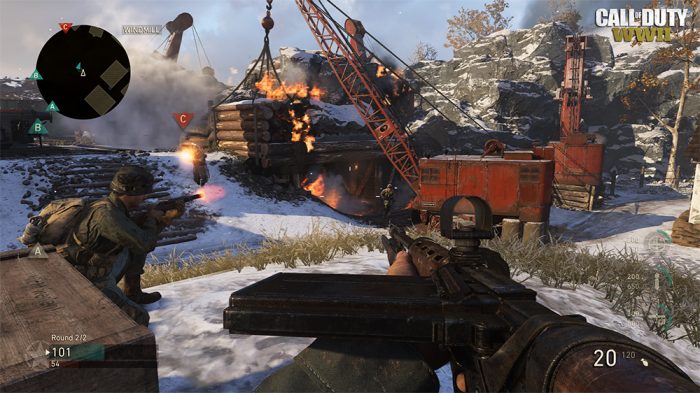
The return to the war era is best featured in the game’s single player mode. The story follows Red Daniels, a soldier in the US army, as he leaves his American lifestyle and girlfriend at home to go to war, hoping to make his family proud. It’s an unoriginal tale by any means, but with the game’s detail and pacing it makes us feel like we are a part of history. The plot is less about the narrative and more about the tactical maneuvers and situations that soldiers came upon, so while it won’t win any awards for story-telling, it does seem to nail the feel of a History Channel retelling of a famous battle (or series of).
The character development is much better than in CoDs past, possibly the best since the original Modern Warfare, and the emotional connection to the digital people surprisingly lets us feel loss when it happens. This is in no small thanks to the incredible visuals and audio. Facial features are amazingly rich, and convey the grittiness of the human experience through small but noticeable animations. The levels are stunning, seemingly more realistic than in the past (dirt and mud and dust are often beautiful touches), even if the trees still look as flat as ever. Graphical prowess isn’t much of what made the CoD games a success, but it sure goes a long way here.
WWII is the first CoD game that makes the single player really feel like a team effort, even without co-op play. It puts Red in the role of a team player, relying not only on the commands of his officers but the cooperation with his squadmates. Each of the specific soldiers he interacts with has a unique skill that can be deployed as needed, and repeated after a recharge period. These can be as simple as an ammo refill or the ability to differentiate enemies from their environments. It almost comes off like working with classes in a multiplayer setting. It’s easy to find myself looking for specific teammates when my health or ammo or grenades are low, for a quick boost. WWII also moves away from gradual health recharges to utilization of first aid kits. This takes away from the old method of hiding behind a rock for a few seconds to restore HP, forcing us to be much more mobile and moving, whether looking for health packs or a teammate to lend us one. Movement becomes important, as we’re not only keeping up with our buddies, but also traversing forward at often breakneck speeds down the tunnel-like game levels. While WWII isn’t a massive world to explore, it instead keeps us moving on a very finely tuned set of rails.
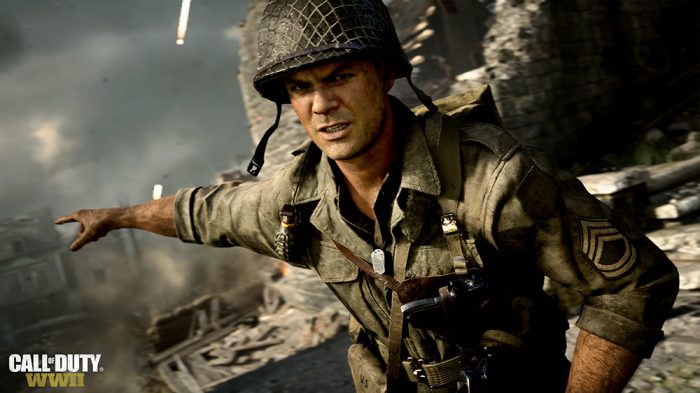
The multiplayer modes capitalize on the same principle. There are options for traditional match play; health regenerates automatically, cover isn’t available in the same way, and aiming and shooting still have their often large hit areas — Call of Duty can’t seem to let go of its own past while it tries to take learn from it. I guess that keeping the fan base happy is still at least shoved into part of the game. It’s the new “War” mode that makes multiplayer enjoyable in a new way. The mode has us taking on short situations, or scenes, where we’re tasked with several objectives that need to be fulfilled. The objectives are often divided, meaning that some of the team has to go one way and the rest the other to plant explosives or build a bridge. It’s a neat way to let those of us who aren’t always fond of multiplayer competition experience at least some of the team work.
If we get bored of the the mini-missions, there’s always Nazi Zombies mode. This year’s iteration pulls from that regional environment of the game, asking us to survive a German (?) town as the dead arrive in waves. The biggest change this year is perhaps the removal of the ability to board up windows. We can no longer slow down the zombies, so we have to constantly be on the move and firing. It’s more of an action mode now than the tactical one of Infinite Warfare. We’re encouraged to run, and run we do because the multitude of zombies can sequentially more difficult in type. It’s as simplified as the rest of the game.
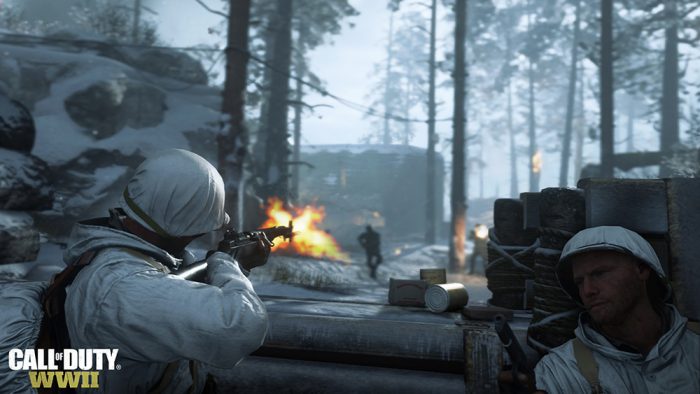
The only bad thing in the game may just be the cumbersome user interface. I never quite know where I’m at when I try to select between modes or matches, and the layers between everything are often unnecessarily complex.
Call of Duty: WWII is potentially my favorite game in the series in a long time. I may feel like that every year, but that’s because it’s mostly been a new shine on an old, successful formula. WWII takes that formula even further back, to its essential gameplay elements and setting. It can almost be called a soft reboot of the series, like a new branching path from that original 2005 sequel. It’s at least something different than the competition now, something that we won’t immediately put away when a new Destiny expansion hits. For an annualized series, Call of Duty was making us a bit tired every iteration. At least now, it has legs in those grounded boots.
This review is based on a PS4 retail copy sent to SideQuesting by the publisher.

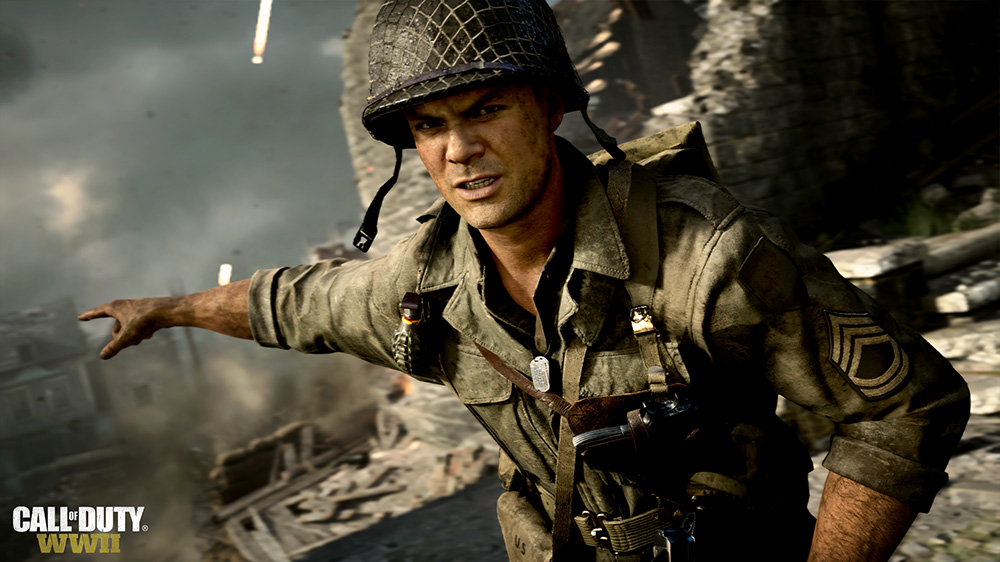
No Comments